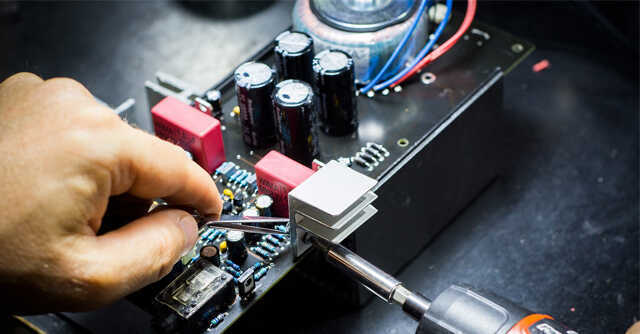
Wearables, hearables makers ramp up local manufacturing amid boom


Large companies, which sell wearables, headphones and more, have begun expanding local manufacturing in a bid to improve margins, have more control over their supply chains, and reduce dependence on Chinese imports coupled with the push to manufacture mobile phones in India.
For instance, Optiemus Electronics, a homegrown manufacturer approved to receive benefits from the government's production linked incentive (PLI) for mobile phones, has started manufacturing "dozens" of hearable and wearable products at its Noida units. The company is making products for Noise--a brand owned by Gurugram-based Nexxbase Marketing Pvt. Ltd., which as per International Data Corporation (IDC) leads the wearable market in India with a 26% share of shipments in Q3 (July-Sep) 2021. The hearables market includes truly wireless (TWS) headphones, which fit in a person's ear and connect to phones through bluetooth.
"In the coming year, we plan to focus on a larger portfolio to manufacture in India itself. In the initial phase, we are planning to design and manufacture TWS in India with Optiemus Electronics," said Amit Khatri, co-founder of Noise, adding that the company is planning to make "significant investments" to go local next year.

A. Gururaj, managing director at Optiemus Electronics corroborated it is planning to expand its production capacity and will increase headcount by around 1000 in 2022. "Along with Noise, we are working with other brands as well, and by next year we will double the capacity of hearables and wearables that we are manufacturing right now," he added.
Optiemus is also opening a manufacturing facility in Noida, which will be operational in the next four to five months. This will be its third plant in India, and include accessories along with mobile phones, etc.
Local demand for wearables and hearables has skyrocketed after the pandemic. IDC's latest data shows India’s wearable market grew by 93.8% year-over-year (YoY) in Q3 2021. A total of 23.8 million units were shipped during the quarter. The post-pandemic boom in the segment has also spurred Indian brands, such as boAt into the list of the top 5 global in the wearable segment.

The company, which is said to be preparing for an initial public offering (IPO) worth Rs.3500 crore, has also started making several of its hearables in India. The company set up a new research and development (R&D) centre in Bengaluru this year. “The pandemic gave us an opportunity to manufacture internally and now we are trying to grow as a make in India brand,” said Vivek Gambhir, CEO, boAt (Imagine Marketing Pvt Ltd).
Tarun Pathak, Research Director at Counterpoint, agreed that manufacturing in these segments will grow significantly in 2022 for various reasons. Pathak pointed out that a few quarters back almost 100% of the segment was dependent on imports, which has started to change. “Local manufacturing will allow brands to ship faster and have more control over the supply chain. This also helps since they are already designing here. It will also help brands save costs. Since the average selling price (ASP) of these products is not very high, every cent saved on these devices is big for these brands,” added Pathak.
This has also attracted new brands to the segment. For instance, Ambrane, which has mostly been known for selling power banks in India, is now planning to venture into the smartwatch category in 2022. Ashok Rajpal, Director of Ambrane India said the company is planning to expand its manufacturing footprint and will move to a new facility near Delhi in the next two to three months. "The new facility will have three times more capacity than the existing plant, which produces 500,000 units every month," he added

Ambrane will also use the new facility for producing batteries for electric vehicles (EVs). "We are in talks with some companies so we can do it (produce EV batteries) on a bigger scale," Rajpal said. “Most of our products and components are currently coming from China. In 2022, we are expecting our dependency on China to come down as we will buy most components from India,” he added.
Rajpal claimed the government is trying to introduce a PLI scheme for hearables and wearables and Ambrane is planning to participate in it. "Manufacturing in this segment is labour intensive and India has an advantage over other countries. With government schemes, India can be the country of choice for manufacturing of these categories for the world,” said Optiemus' Gururaj.
